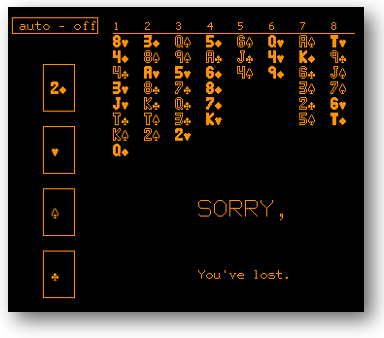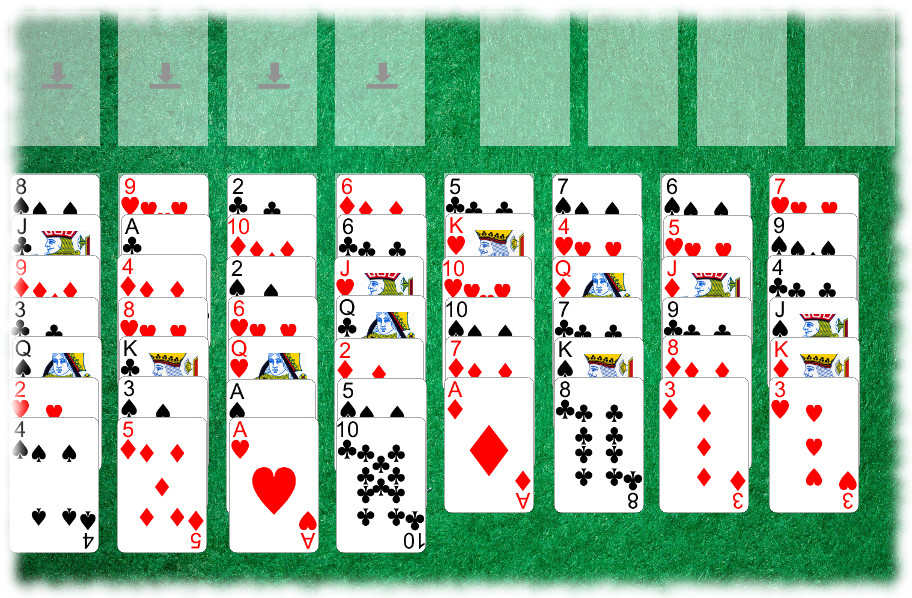How to play: Free Cell

Free Cell as it appeared in the original 1978 version for the PLATO computer system.
Free Cell (sometimes written Freecell)
has some similarities with popular solitaire game Klondike.
But unlike Klondike, a key feature
are a number of "free cells" that the player uses to help them organise cards.
Free Cell is slightly unusual in that it originally became popular as a computer game
rather than having originated as a physical card game (except by its author and similar existing games
that no doubt inspired its invention!). Free Cell is almost always solvable (unlike many other
solitaire games) if the player makes their moves wisely.
Nowadays, Free Cell owes its notoriety to its inclusion
as a freebie in the Windows operating system.
The version included in Solitaire Whizz for iPad is the version most popularly played and
implemented nowadays, and what in the original 1978 version was the classic or
default version. However, it is worth noting that the configuration of the original 1970s
version was less fixed, allowing between 4 and 10 columns and between 1 and 10 cells.
How to play FreeCell on your iPad
If you haven't yet downloaded the app, click here to get Solitaire Whizz Compendium for iPad, which includes the version
of FreeCell (Free Cell) described here.
Layout
All of the cards in the deck are dealt face up into 8 columns: 7 cards in each of the first four columns and 6 in each of the remaining columns. At the top of the layout, there are four foundation piles, initially empty, and four empty "free cells" to the right of the foundations. The figure below shows how this layout looks in Solitaire Whizz:

Freecell layout in Solitaire Whizz for iPad
Aim
The aim, as with Klondike and other solitaire games, is to build all cards on to the foundation piles, one pile per suit. As the Aces become available, build them on to the foundations, followed by the corresponding 2s etc.
Gameplay
The bottom card of any foundation column is available for play at any time. An available card may be played on to a foundation (ascending order, one foundation per suit), on to an empty free cell, or
on to another column. To build on to another column, you must do so in downward sequence, alternating
red/black as in other games such as Klondike and Yukon. Whole sequences of
cards may also be moved from one column to another.
Cards on the 'free cells' are always available for play, either on to a foundation or bottom of
a column in the tableau. Therefore, the free cells provide an important way to organise cards
as you are building sequences and prevent you from getting 'stuck'.
Empty columns may be filled with any card or sequence.
Free Cell differs from various other games in that all cards are face up at the start of the game and therefore all of the 'information' for completing the game is available from the outset. Nearly all Free Cell games are solvable if played judiciously.
As in Klondike solitaire and other solitaire games, when playing Free Cell it is important to free up the aces and
start the foundations as soon as possible. Try to use the 'cells' as a temporary aid,
moving one or two cards to an empty cell when you have a clear idea of which sequence or foundation
this will help you to build on. Trying to free up a column or two early on can also be a help,
as an empty column can effectively be used as an additional free cell.